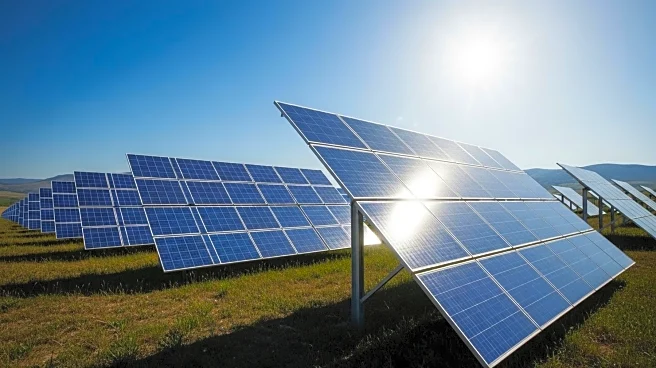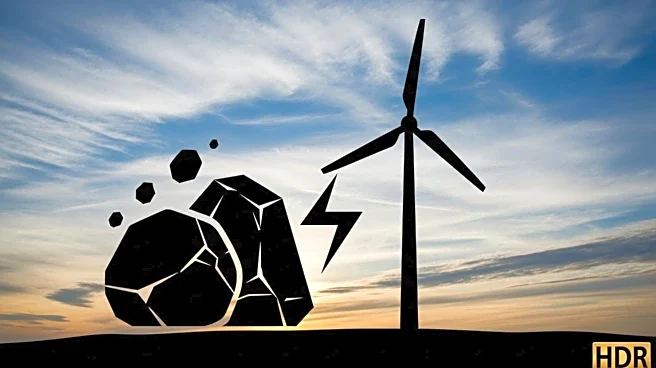What's Happening?
The U.S. solar energy sector is on track to surpass wind energy by 2025 and coal shortly thereafter, according to the Federal Energy Regulatory Commission (FERC). As of July 2025, solar capacity has reached 153 GW, closely trailing wind at 158 GW. Natural gas remains the dominant source of electricity, comprising 42% of the energy mix. The rapid growth in solar energy is attributed to the addition of 16 GW of solar capacity through July 2025, which accounts for nearly 75% of the total new electric generation capacity added this year. This trend indicates a significant shift in the U.S. energy landscape, with solar poised to become the third-largest source of electricity, potentially overtaking coal in the near future.
Why It's Important?
The anticipated rise of solar energy as a leading electricity source in the U.S. marks a pivotal shift towards renewable energy, reducing reliance on fossil fuels like coal. This transition is crucial for meeting environmental goals and reducing carbon emissions. The growth of solar energy also presents economic opportunities, including job creation in the renewable energy sector and potential cost savings for consumers. As solar energy becomes more prevalent, it could lead to increased energy independence and security for the U.S., while also encouraging further technological advancements and investments in renewable energy infrastructure.
What's Next?
Looking ahead, FERC forecasts no new coal capacity additions through July 2028, with 63 coal plants expected to retire, reducing coal capacity by 25 GW. In contrast, solar energy is projected to see 92.6 GW of new capacity additions, potentially reaching 250 GW by 2028. This growth trajectory suggests that solar energy will not only surpass wind but also significantly exceed coal capacity, reshaping the U.S. energy mix. Stakeholders, including policymakers and energy companies, will likely focus on supporting this transition through incentives and infrastructure development to accommodate the increasing solar capacity.










